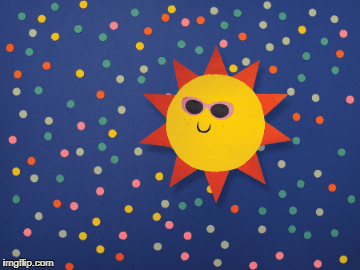As you are almost surely aware, a solar eclipse will be visible across much of the United States, including right here in St. Louis, on Monday, August 21, 2017. It’s kind of a big deal – after all, the last total solar eclipse near St. Louis was in 1442!
Hopefully, you are also aware that looking at the sun without proper protection during an eclipse (or anytime) can cause serious retinal damage and lead to permanent vision loss.
Only during true “totality” – when the sun is fully covered by the moon and only the outer corona is visible – is it safe to look directly at the eclipse without eye protection. But it’s important to note that the Washington University Medical Center is not in the path of true totality and will only experience a partial eclipse (99.98% obscuration). Therefore it will never be safe to look directly at the eclipse without eye protection while on the medical campus. If you can, head southwest of the city to experience true totality.
 NASA’s interactive map) shows both the Danforth Campus and the medical campus (the pin to the right of Forest Park) just north of the “path of totality,” the northern edge of which is indicated by the diagonal purple line.
NASA’s interactive map) shows both the Danforth Campus and the medical campus (the pin to the right of Forest Park) just north of the “path of totality,” the northern edge of which is indicated by the diagonal purple line.
Safe eclipse viewing is of the utmost importance. Solar retinopathy occurs when sunlight burns and potentially scars the retina. Only solar filters and viewers that comply with the ISO 12312-2 standard provide enough protection to let you look directly at the sun. Unfortunately, some phony eclipse viewers imprinted with the ISO standard have flooded the market amid the eclipse hype. You can check the American Astronomical Society’s list of reputable vendors of solar filters and viewers, or check your viewer using some simple tests. For more safety tips and eclipse activities, see NASA’s eclipse website.
If you don’t have eclipse glasses or a viewer, you can still view the eclipse indirectly (without looking directly at the sun) by making a pinhole projector or just using your hands. You can even print your own pinhole projector in the shape of your state or the entire United States – we will have some of these printouts available at the library’s front desk if you’d like to pick some up (for free).
There is a university eclipse watch party with complimentary ice cream and viewing glasses on the Danforth Campus on Mudd Field starting at 12 p.m. – RSVP here. Or if you can only sneak away from work or studies for a few minutes, just head outside with a plan for using one of the safe viewing methods discussed above and pop on this festive eclipse playlist for a DIY viewing party (we suggest the field next to the Scott-McKinley Research Building or the top level of a parking garage for an unobstructed view).
In St. Louis, the partial eclipse will last from approximately 11:35 a.m. to 2:30 p.m. The maximum eclipse you’ll see from the medical campus will occur at about 1:15 p.m. with a duration of about a minute.

